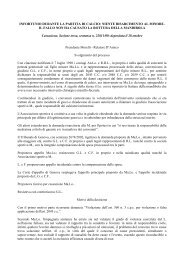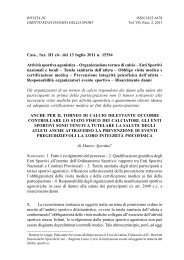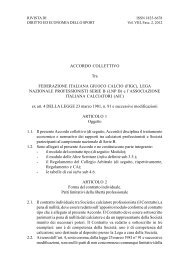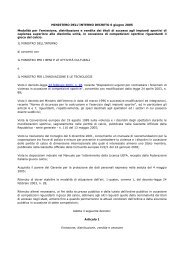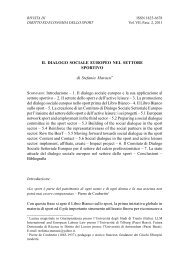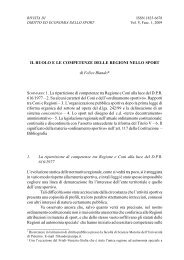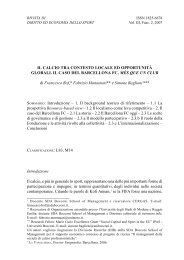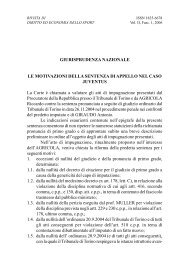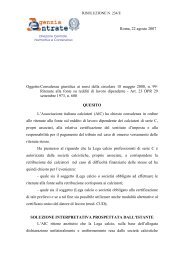Create successful ePaper yourself
Turn your PDF publications into a flip-book with our unique Google optimized e-Paper software.
Globalization of the sports economy 23<br />
increased data collection and athlete testing at a global level (namely the role of the<br />
World Anti-Doping Agency). Doping substances are often traded across national<br />
borders. Economists should pay attention to this dark side of global trade connected<br />
to sport.<br />
3. Globalization as geographical spread of the sports economy<br />
Economic globalization of specific sporting practices and services offered to sport<br />
participants is less advanced. A lim<strong>it</strong>ed though increasing number of sport disciplines<br />
f<strong>it</strong>s w<strong>it</strong>h development outside their country of origin: skiing, mountain climbing,<br />
sailing, canyoning, trekking, rally raid and so on. The result is a consumption of<br />
sport services (sport equipment rental, instructors, coaches, guides) abroad, i.e. an<br />
international spread of sport consumption. At this point, economic globalization of<br />
the sports economy overlaps w<strong>it</strong>h globalization of tourism.<br />
The sports economy geographically spreads also to new countries when a<br />
new sport discipline settles down in a country being imported from a different<br />
country. European football (soccer) entered the US market in the 1980s. The other<br />
way round, baseball and American football penetration is more recent in European<br />
markets. Other examples trace us back to the history of sports: football and rugby<br />
were exported from England to France and continental Europe in the late 19 th<br />
century, English cricket was transferred to India, table tennis, judo and other martial<br />
arts moved from Asia to the rest of the world, frisbee moved abroad from the US,<br />
and so on. All economic activ<strong>it</strong>ies associated w<strong>it</strong>h these sports had geographically<br />
spread as well.<br />
A last channel for globalization is simply when the sports economy <strong>it</strong>self<br />
extends to new countries where <strong>it</strong> has not been played before (former colonies,<br />
developing countries). A variant is expansion of a market-based sports economy<br />
towards former communist countries in which sports activ<strong>it</strong>ies and associated<br />
economic flows were state-run and state-owned. National pride, international<br />
compet<strong>it</strong>ion in sport, and other non economic factors tend to attract talents, human<br />
cap<strong>it</strong>al, money and finance into the sport sector in all countries. But here we can<br />
talk about an ‘uneven globalization’ of the sports economy or an uneven development<br />
of sport globalization since the sports economy grows (or decreases) nearly at the<br />
same pace as GDP in most countries in the world.<br />
The sports economy has obviously extended into the developing countries<br />
but <strong>it</strong>s growth is hindered there by underdevelopment of physical and sport activ<strong>it</strong>ies.<br />
The underdevelopment is tightly correlated to economic underdevelopment. 22 The<br />
rate of participation in sports (i.e. the percentage of sport participants in the overall<br />
____________________<br />
BOURG, Contribution à une analyse économique du dopage, Reflets et perspective de la vie<br />
économique, 39, 2000, 169-78; N. EBER, J. THÉPOT, Doping in Sport and Compet<strong>it</strong>ion Design,<br />
Recherches Economiques de Louvain, vol. 65, 1999, 435-46.<br />
22<br />
W. ANDREFF, The correlation between economic underdevelopment and sport, Europ. Sport<br />
Manag. Quart., vol. 1, n. 4, 2001, 251-79.




